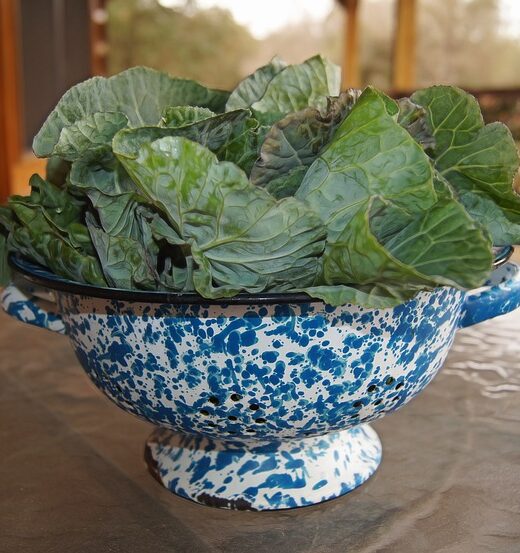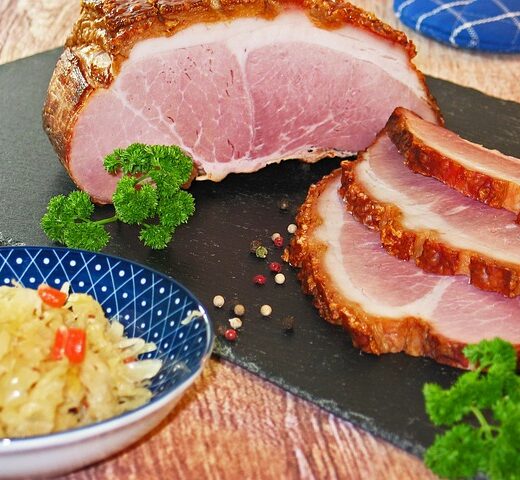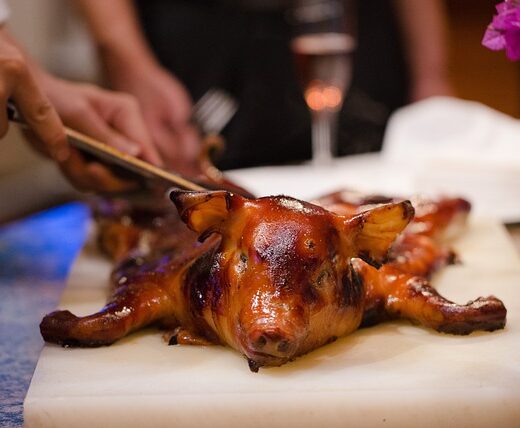When I was a child, I recall the rush to get all of the traditional New Year’s Day delicacies before the grocery store ran out of them. After all, if you didn’t have your greens, how would you guarantee that your family would prosper and enjoy good fortune during the year?
Many cultures in the US have traditions they adhere to when it comes to eating during the holidays. Easter, Thanksgiving, and Christmas are well-known for their food traditions. New Year’s Day is another holiday rich with folklore and traditions. These tales explain why in detail.
Here are only four examples of traditional regional good luck meals in America for the new year: the Midwest’s pork and sauerkraut, the South’s greens and black-eyed peas, the Scandinavian immigrants’ pickled herring, and the Italian-Americans’ lentils.

Picture this.
The sauerkraut’s star, a cabbage, is green and shiny like cash. Of course, collard greens and other hardy braising greens are as well. Lentils are shaped like discs and resemble coins. Pickled herring has scales that are gleaming and shimmer with riches. Pigs are fat-rich mammals and the source of pork. Regarding black-eyed peas, one of the lazily given arguments in encyclopedia entries and on the great Google is that they resemble coins.
Coins, bills of exchange, wealth: money, money, money.
In my opinion, this frequently mentioned link to money is a red herring. For example, banknotes aren’t usually green. Along with herring, several other fish have silver scales. Not just hog, but other meats like lamb, have marbling with a lot of rich fat. Let’s look at the foods, the cultures that most closely resemble them, and the roles those cuisines played in their everyday lives in America and their native countries.

Long-Cooked Greens and Black-Eyed Peas: A Journey Through the Talmud and Beyond
Please call me if you come across any coin that resembles a black-eyed pea unless you’re thinking of the beads used by Native Americans as currency. In the meantime, let’s go at least 1,500 years in the past to uncover this nutritious, important historical bean’s lucky associations (and yes, botanically speaking, they are beans, not peas.)
There are a few different foods that are linked with African-Americans and with the South. It just isn’t New Year’s without the black-eyed pea, which traveled from Africa to the New World—at least not a lucky one. Two physical characteristics of dried black-eyed peas—the promise of germination when planted and the promise of greatly expanding when cooked—signify good things to come and a promise of a bright new year.

Black-Eyed Peas Other Story
Rosh Hashanah (the Jewish New Year), usually celebrated in the Fall, is celebrated with a meal containing foods eaten to ensure good fortune. Black-eyed peas, however, also have a little-known historical history as a good-luck practice that began with a list of five items described in the Jewish Talmud. According to historian Gil Marks in The Encyclopedia of Jewish Food, fenugreek seeds appear on this list even though black-eyed peas are not. Fenugreek seeds are referred to in the Talmud as Rubia, which sounds like yirbu and means “to grow.” The name for black-eyed peas, lubia, was mistakenly used by Sephardim, who then started to include them in their good-luck spread for the new year. According to some sources, Sephardic Jewish colonists brought this practice to the American South (when Jews settled in Georgia as early as 1733).
Given how prominently the black-eyed pea appeared in the diets of slaves—and subsequently their masters—in the South, it appears unlikely that the Talmud alone was the inspiration for the food’s links with prosperity. Before the advent of Jews in the colonies, black-eyed peas, domesticated for the first time in Africa 5,000 years ago, were believed to have arrived in North America via slave ships. The Jewish New Year, Rosh Hashanah, is typically observed around September.
Hunger-stricken Union soldiers devoured Southern harvests after the Civil War. Yet they left behind black-eyed peas, which they regarded as livestock fodder and which gave Southerners of all kinds much-needed food during the Reconstruction.

An old Southern proverb reads, “Greens for dollars, peas for pennies, and cornbread for riches.” It’s important to emphasize that all three were necessities for hard-working families with modest incomes. Although cabbage can make an appearance, collards, turnips, and mustard are traditional braising greens in the South. Particularly liked because they are flat like paper money and inexpensive, abundant, and simple to raise, collards are a favorite.
Greens combine with rice and black-eyed peas in the well-known dish Hoppin’ John to create a nutrient-dense meal that strikes a balance between color, texture, and flavor. Your year will start if you listen to the 1953 Bud Powell Trio recording of “Collard Greens and Black-Eyed Peas” while enjoying just that. Your beans or greens most likely have a flavor from a piece of cured pork, adding to your good fortune.

Pork and Kraut: Farm Life Cycles, Fermented Cabbage, and Progress
Pigs, usually served as whole roasted or shanks, are viewed as a symbol of progress since they constantly scratch forward when eating, unlike chickens and turkeys that scratch backward. According to [Pennsylvania Dutch] proverb, “the pig roots forward,” sauerkraut with pork was also consumed for good luck on New Year’s Day, according to historian William Woys Weaver in Sauerkraut Yankees.
People exploit superstition all over the Midwest by placing a piece of pork in the middle of a holiday table. When I casually asked my friends living in Ohio, Pennsylvania, and West Virginia about their favorite New Year’s traditions, they all mentioned eating pig and sauerkraut. In addition to the substantial populations of people with German ancestry in the Midwest and large portions of Appalachia, there are also small populations of Hungarian, Polish, and Czech individuals.
Roasted pig is merely one example of the passionate Midwestern relationship between pork and cabbage. New Year’s feasts feature cabbage rolls with filled pork, and kraut with kielbasa chunks is also common. They are mouthwatering, hearty food for a wintry day, but is there another justification for this custom except for how a pig eats?
On the large clock of the Münster cathedral, there is a painting of a pig being butchered with a Latin inscription that reads, “Everyone rejoices when November kills its pig.” Germany and other Eastern European nations have historically valued pork as an integral part of their cultures. Because it is a good food safety practice to start the time-consuming task of butchering a large animal when it is chilly outside, peasants who kept pigs typically killed them in the Fall. To secure a premium cut of pork for New Year’s Day, a family had to place their order in the weeks after the slaughter, which provided more fresh slices of a pig than the preserved hams and sausages used ordinarily.
This story continues in Part 2. Join us here.


Leave a Reply